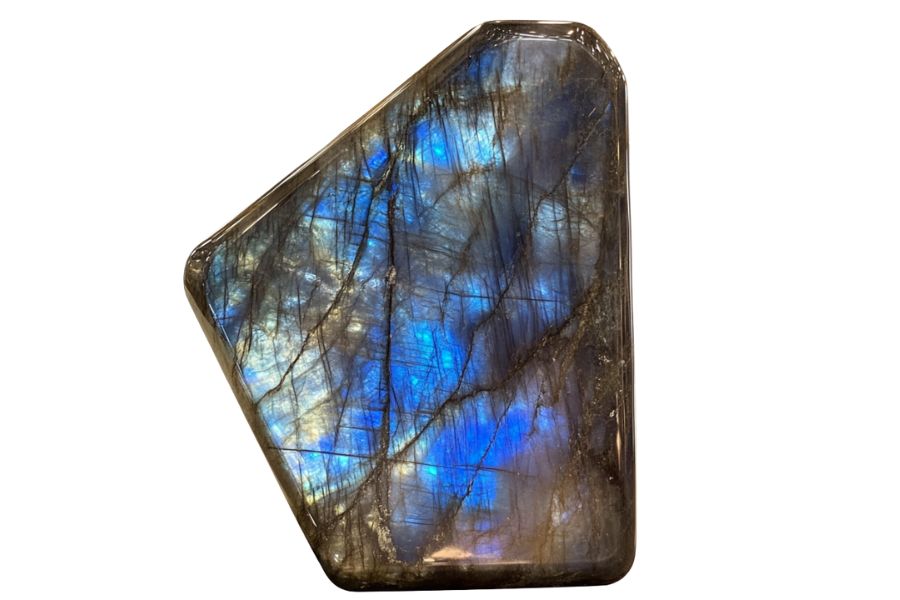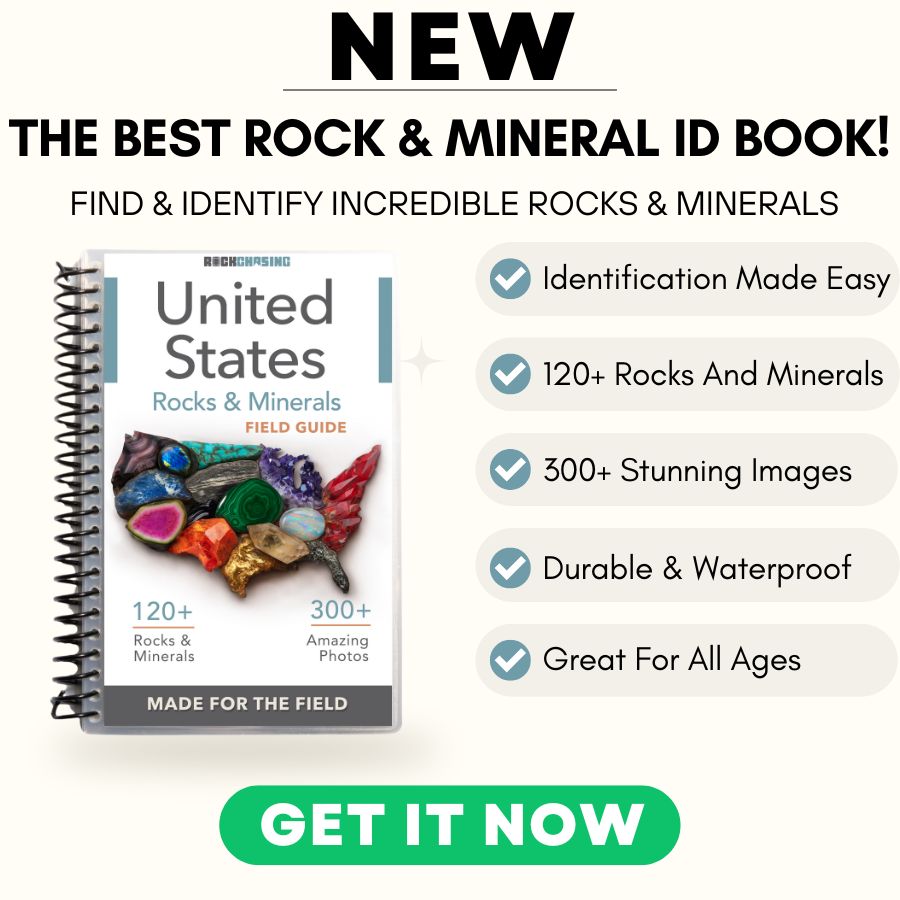Labradorite hunting in Idaho brings rock collectors from all over the country. This beautiful stone sits hidden throughout parts of the state, waiting for sharp eyes to spot its unique shine. Getting your hands dirty while searching for these gems makes for a great outdoor day.
The mountains and streams of Idaho hold secrets that most folks walk right past. Labradorite doesn’t always catch your eye at first glance. You might need to turn rocks over or look in spots where water has washed away dirt and sand.
Finding these stones takes some patience and a bit of luck. Some areas in Idaho have better chances than others for scoring this pretty rock. When the sun hits a piece just right, you’ll know why so many people spend hours searching for them. The flash of blue and green makes all the effort worth it.
How Labradorite Forms Here

Labradorite forms deep underground when magma slowly cools and crystallizes. The process happens when different minerals separate while cooling, creating thin layers stacked on top of each other. These layers have slightly different chemical makeups, usually about 1 micron thick.
When light hits these layers, it creates that stunning blue-green flash we love, called labradorescence. The stone starts out as a mix of calcium, sodium, aluminum, and silicate minerals.
As it cools, these minerals organize themselves into this layered pattern, which happens most often in places where magma intrudes into the surrounding rock. It’s like nature’s own light show, frozen in stone.
Types of Labradorite
Labradorite comes in several distinct varieties. Each type exhibits special qualities that make it sought after by collectors.
Blue Labradorite
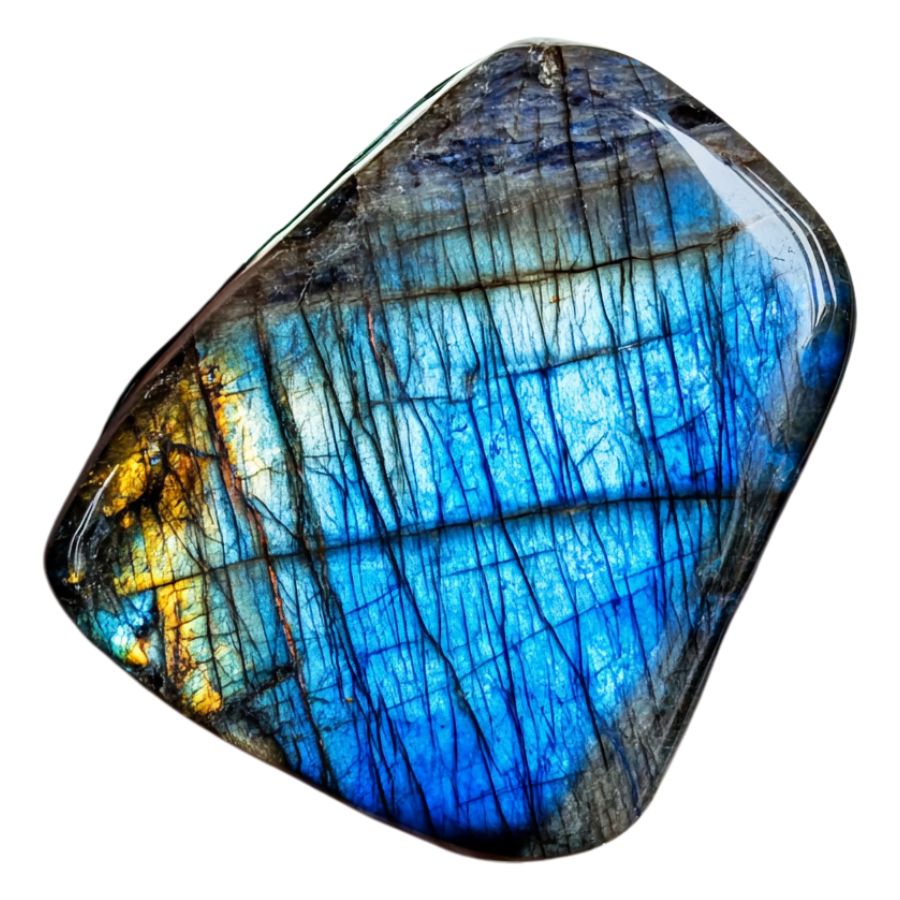
Blue Labradorite stands out for its remarkable blue iridescence against a dark gray or black background. When light hits the stone’s surface, it creates a stunning display of electric blue flashes, sometimes accompanied by hints of green or violet.
The blue flashes appear most vivid when viewing the stone from specific angles, creating an almost magical transformation as you rotate it. This effect is often compared to the ethereal beauty of the Northern Lights.
Exceptional specimens display an intense, electric blue flash that covers a large portion of the stone’s surface. Some pieces also show secondary colors like aqua or sea green, adding depth to their visual appeal. The contrast between the dark base and bright blue flashes makes each piece unique.
Golden Labradorite
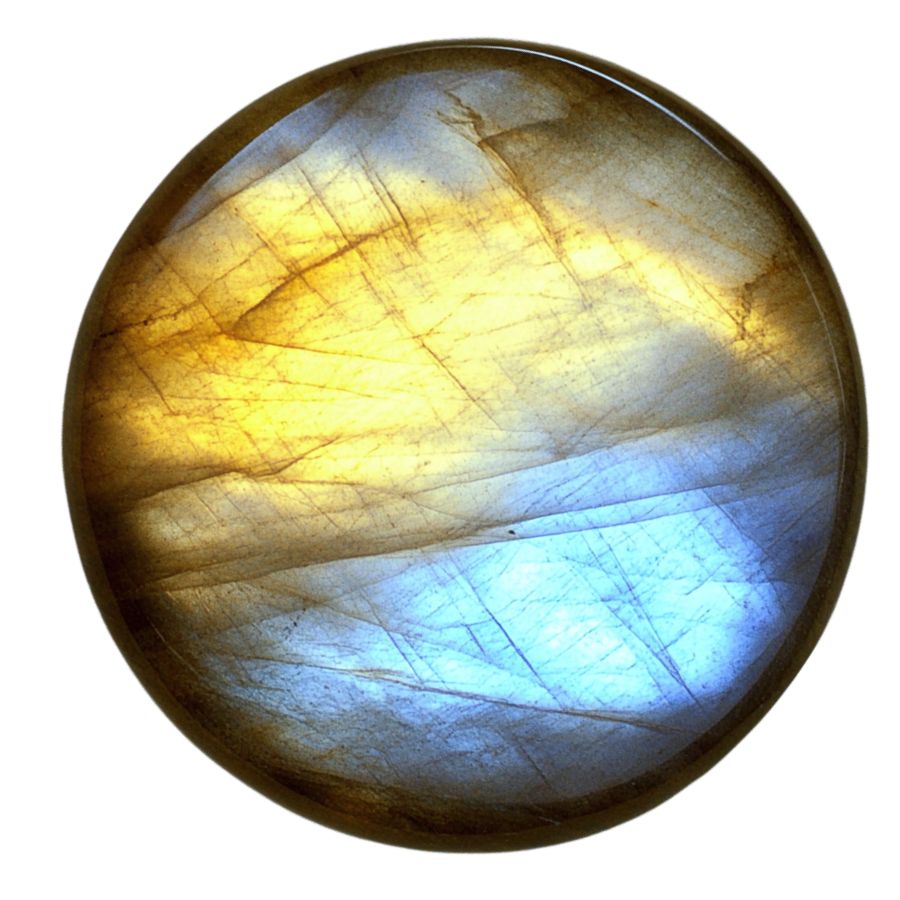
Golden Labradorite displays a mesmerizing golden-yellow sheen that sets it apart from other varieties. The stone’s surface exhibits brilliant flashes of gold and amber, creating a warm, sun-like glow that seems to emanate from within. These golden rays often appear alongside subtle hints of green or champagne colors.
What makes Golden Labradorite special is its ability to display multiple golden hues simultaneously. Some specimens show a range of colors from pale yellow to deep amber, creating a multi-dimensional effect.
The golden flash can vary in intensity and coverage, with premium specimens showing broad, bright areas of gold schiller.
Rainbow Moonstone

Rainbow Moonstone Labradorite exhibits a distinctive white or colorless base with an enchanting blue sheen that floats across its surface. Blue sheen is often accompanied by flashes of other colors, including pink, yellow, and green.
This stone’s most captivating feature is how its colors appear to float just beneath the surface, creating an almost three-dimensional effect. As light moves across the stone, these colors shift and change, revealing new patterns and combinations. This creates a dynamic display that seems to change with every movement.
The stone’s transparency can range from translucent to semi-transparent, with the most valued pieces showing excellent clarity beneath their shimmering surface.
Spectrolite
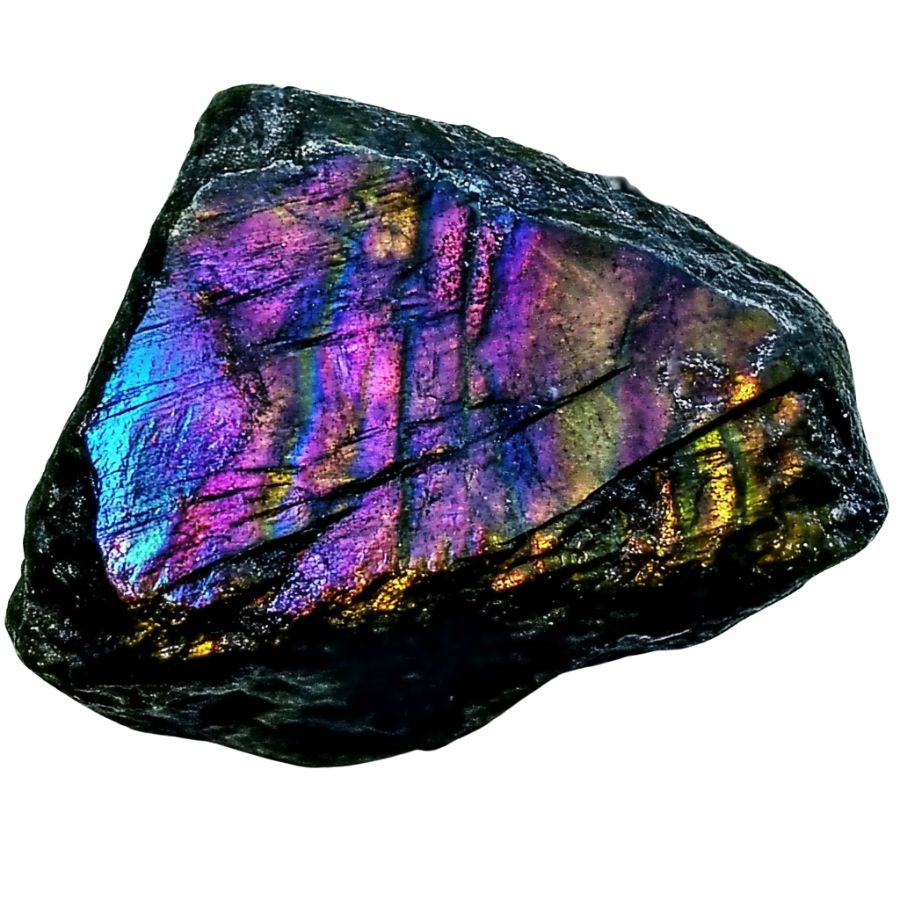
Spectrolite reigns as the most dramatic member of this stone family, with its distinctive jet-black base setting it apart from other varieties.
What makes it truly special is that premium specimens can simultaneously display the complete spectrum of colors, from deep indigo to bright orange, emerald green to royal purple, all in a single piece.
The finest specimens possess what experts call “full-face color,” meaning the vibrant display covers most of the stone’s surface rather than appearing in small patches.
This characteristic, combined with its remarkable color intensity, has earned Spectrolite its reputation as the most visually impressive variety of all similar stones.
Transparent Labradorite
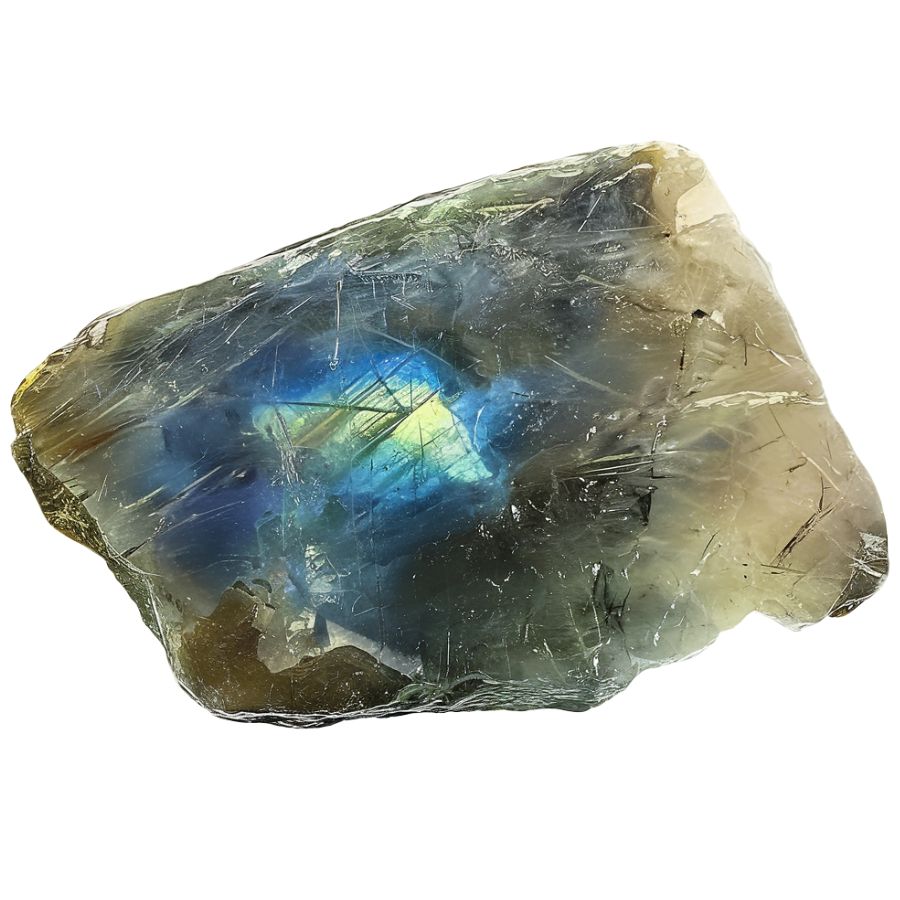
Transparent Labradorite exhibits a remarkable clarity that separates it from its opaque cousins. Crystal-clear areas allow light to pass through, creating an exceptional display of blue flashes against the transparent background.
Natural specimens often show areas of both transparency and translucency. Beautiful color changes occur as you move this stone, with the transparent areas revealing subtle blue sheens that seem to float within the crystal.
Some pieces display additional colors like soft greens or pale yellows, though the blue flash remains dominant.
Remarkable clarity combines with the signature color play to create stones that appear almost liquid-like.
Andesine-Labradorite
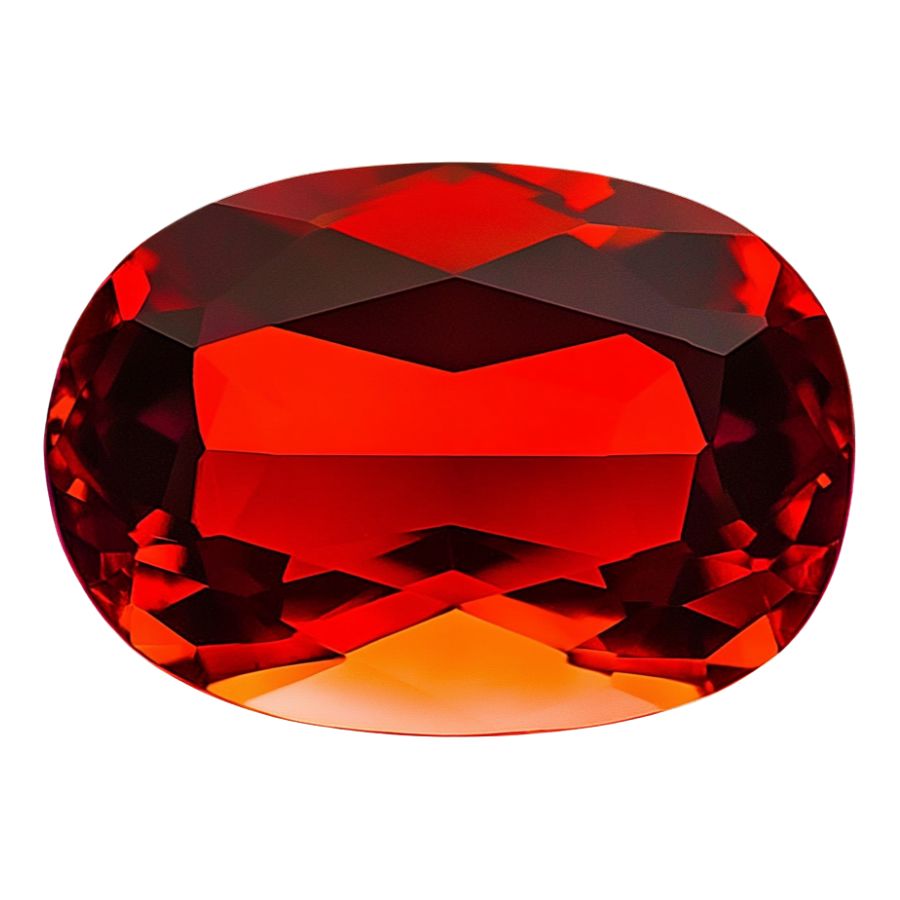
Reddish-orange hues dominate Andesine-Labradorite’s appearance, creating a warm and inviting glow. Delicate green and yellow streaks often appear throughout the stone, adding complexity to its color palette.
Metallic sparkles dance across the surface, different from the typical labradorescent effect. Fresh discoveries of this relatively new gemstone continue to reveal new color combinations.
Striking color variations appear in high-quality pieces, ranging from deep red to bright orange. Many specimens show subtle color zoning, where different hues blend together in distinct patterns.
Black Labradorite
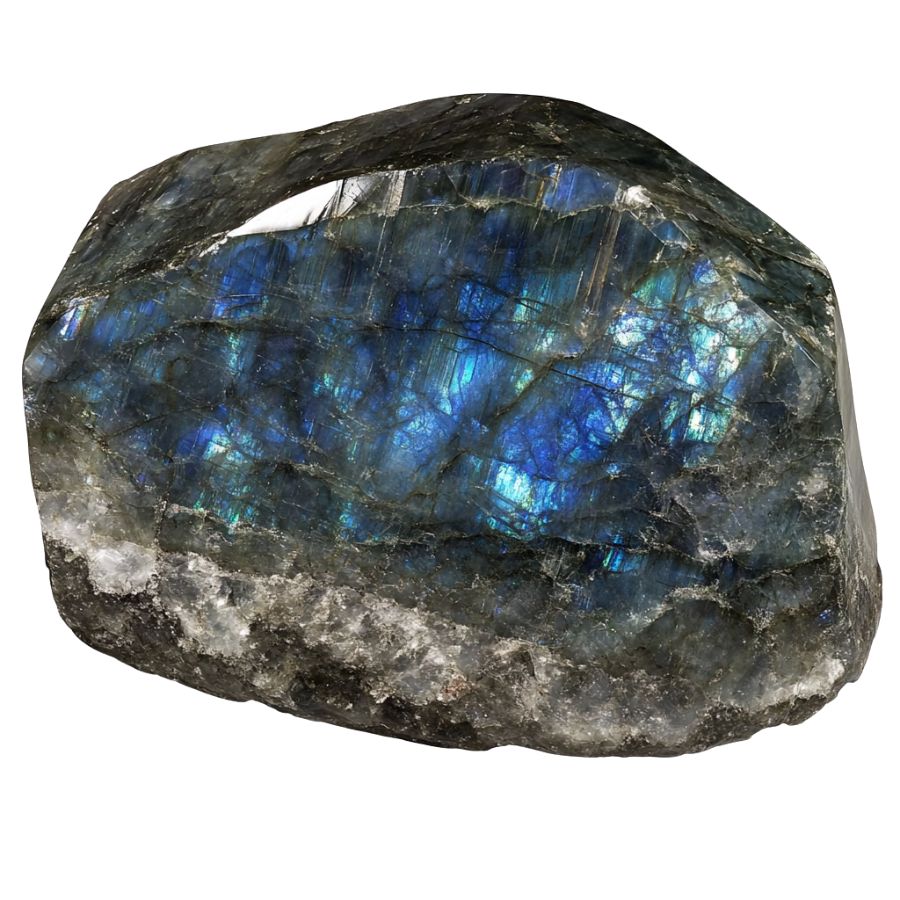
Black Labradorite presents a dramatic dark canvas that emphasizes its colorful display. Bright flashes of color stand out dramatically against the deep black background, creating stunning visual contrast.
Most specimens show multiple colors at once, creating an eye-catching display. These color displays often include electric blues, emerald greens, and golden yellows, all visible simultaneously.
Natural sunlight brings out the boldest displays, while artificial light can highlight subtle color variations. Some specimens also show interesting patterns in how the colors are distributed.
Brown Labradorite
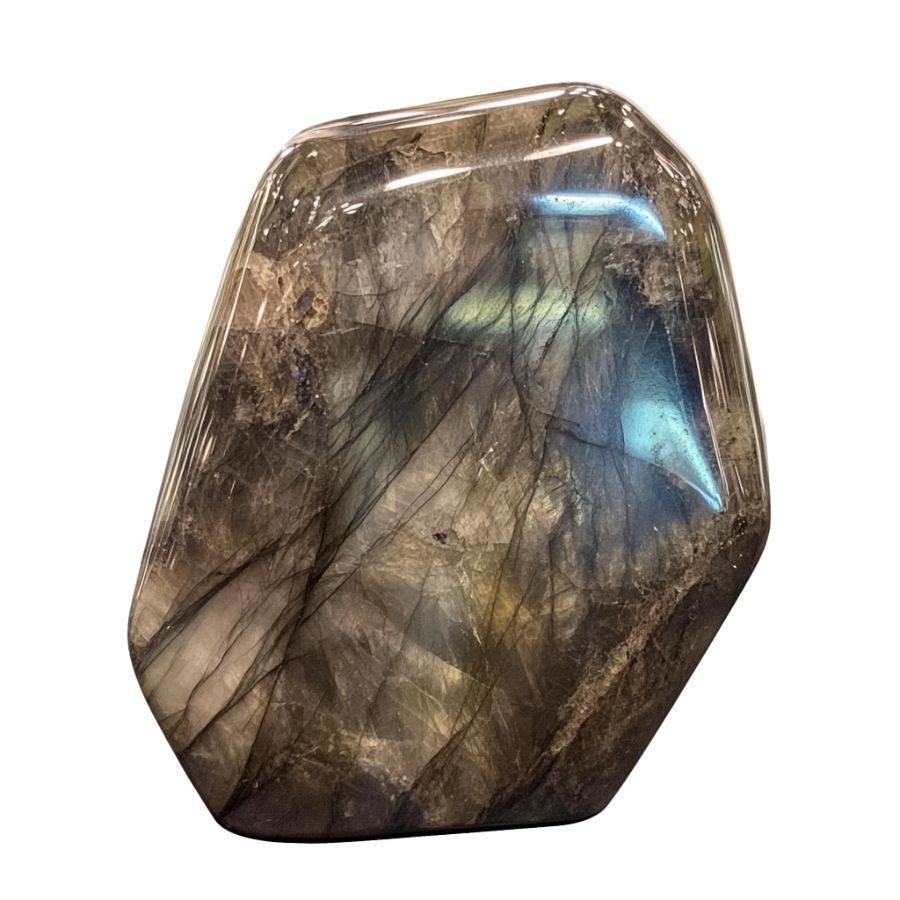
Brown Labradorite features rich earth tones ranging from deep chocolate to warm amber. Peach and orange undertones often appear throughout the stone, creating depth and dimension.
Multiple color zones create interesting patterns within each stone. These patterns can include stripes, swirls, or mottled areas that combine different brown and orange hues.
Subtle iridescence sometimes appears on the surface, adding an unexpected shimmer to the earthy colors. This effect is more subdued than in other varieties but adds an interesting dimension to the stone’s appearance.
If you want REAL results finding incredible rocks and minerals you need one of these 👇👇👇
Finding the coolest rocks in isn’t luck, it's knowing what to look for. Thousands of your fellow rock hunters are already carrying Rock Chasing field guides. Maybe it's time you joined the community.
Lightweight, mud-proof, and packed with clear photos, it’s become the go-to tool for anyone interested discovering what’s hidden under our red dirt and what they've already found.
Join them, and make your next rockhounding trip actually pay off.
What makes it different:
- 📍 Find and identify 140 incredible crystals, rocks, gemstones, minerals, and geodes across the USA
- 🚙 Field-tested across America's rivers, ranchlands, mountains, and roadcuts
- 📘 Heavy duty laminated pages resist dust, sweat, and water
- 🧠 Zero fluff — just clear visuals and straight-to-the-point info
- ⭐ Rated 4.8★ by real collectors who actually use it in the field
What Rough Labradorite Looks Like
Labradorite in its rough form can be tricky to spot, but once you know what to look for, it becomes easier. Here’s how to recognize this fascinating stone in its natural state.
Look for the Signature Flash
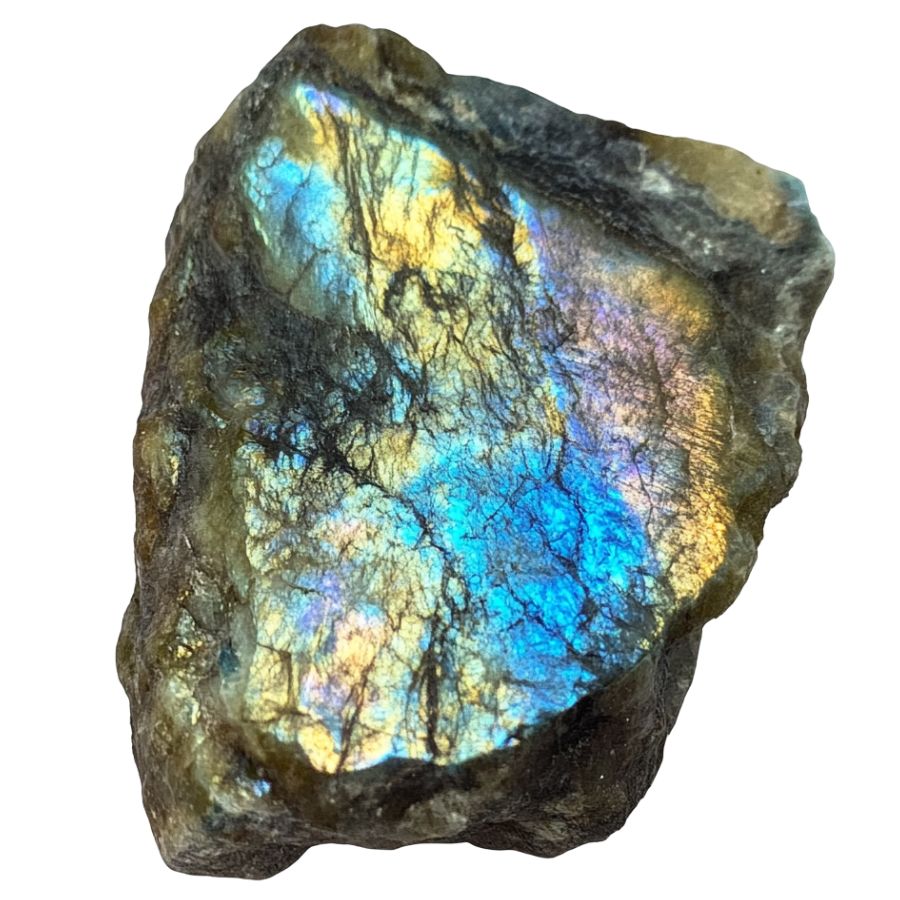
Raw labradorite often shows patches of its famous iridescent flash, even when unpolished. Check dark gray or black areas under direct sunlight – you might catch glimpses of blue, green, or gold shimmer.
Sometimes, you’ll need to wet the surface slightly to see this effect better. The flash isn’t always obvious but usually appears as scattered patches.
Check the Base Color and Texture
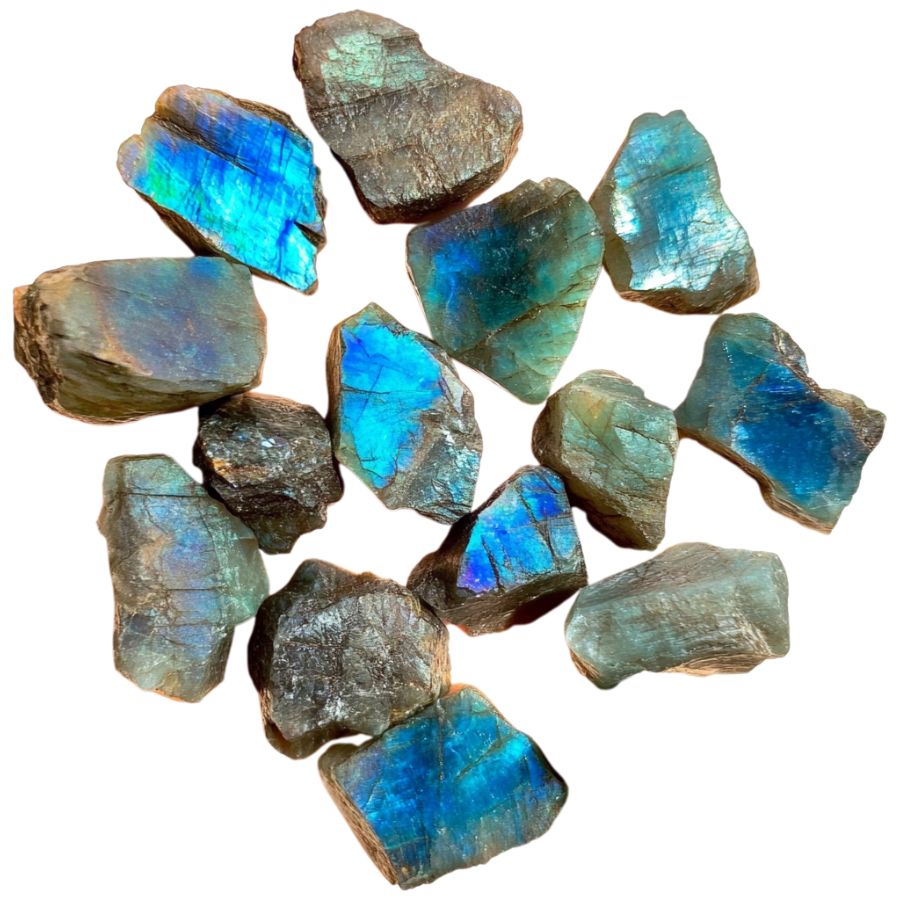
The main body should be dark gray to black, sometimes with a slight greenish tinge. The surface feels smooth but not glossy, similar to unpolished glass.
Look for a slightly bumpy texture with occasional flat surfaces. Fresh breaks will show a more uniform color than weathered surfaces.
Assess the Hardness and Breakage

Try scratching the surface with a copper penny – it shouldn’t leave a mark. The stone often breaks with smooth, flat surfaces at distinct angles.
You’ll notice these angular breaks are pretty characteristic, unlike random rough breaks in common rocks.
Test the Translucency
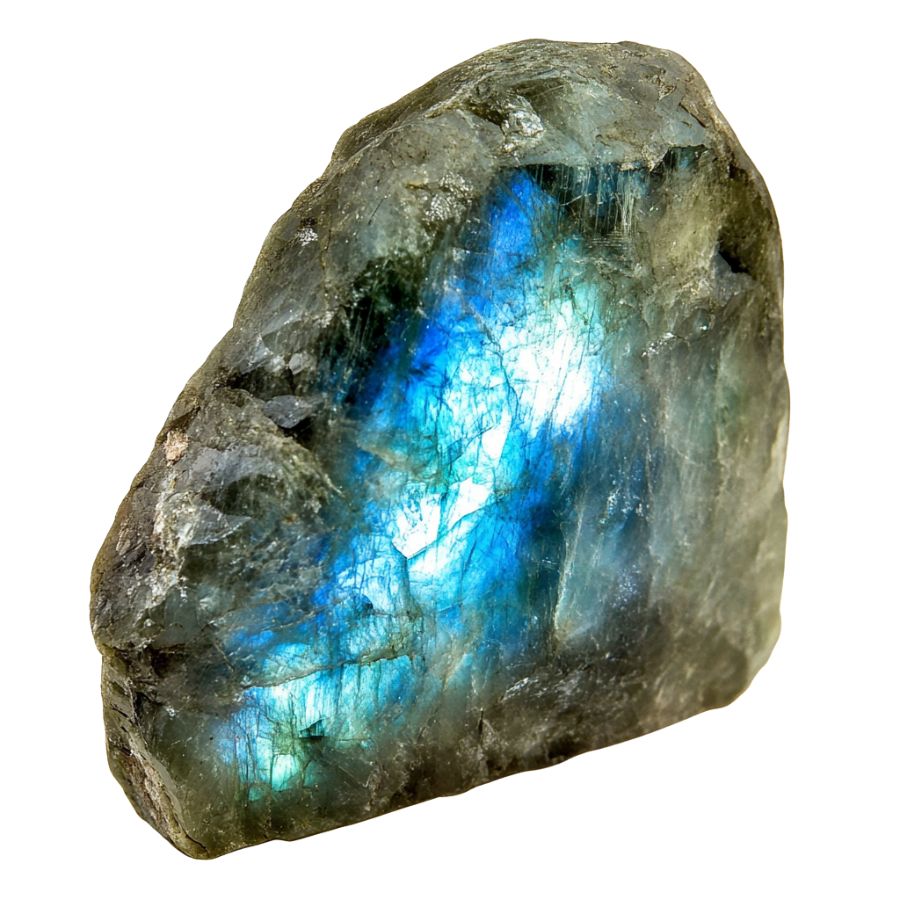
Hold a thin edge up to strong light. Raw labradorite should show some translucency, appearing slightly cloudy rather than completely opaque. The edges might look slightly whitish or gray when light passes through. Thicker pieces will appear darker and more opaque.
A Quick Request About Collecting
Always Confirm Access and Collection Rules!
Before heading out to any of the locations on our list you need to confirm access requirements and collection rules for both public and private locations directly with the location. We haven’t personally verified every location and the access requirements and collection rules often change without notice.
Many of the locations we mention will not allow collecting but are still great places for those who love to find beautiful rocks and minerals in the wild without keeping them. We also can’t guarantee you will find anything in these locations since they are constantly changing.
Always get updated information directly from the source ahead of time to ensure responsible rockhounding. If you want even more current options it’s always a good idea to contact local rock and mineral clubs and groups
Tips on Where to Look
Labradorite isn’t super common in everyday places, but with some smart searching, you can find it. Here’s where you should look:
Metamorphic Rock Formations
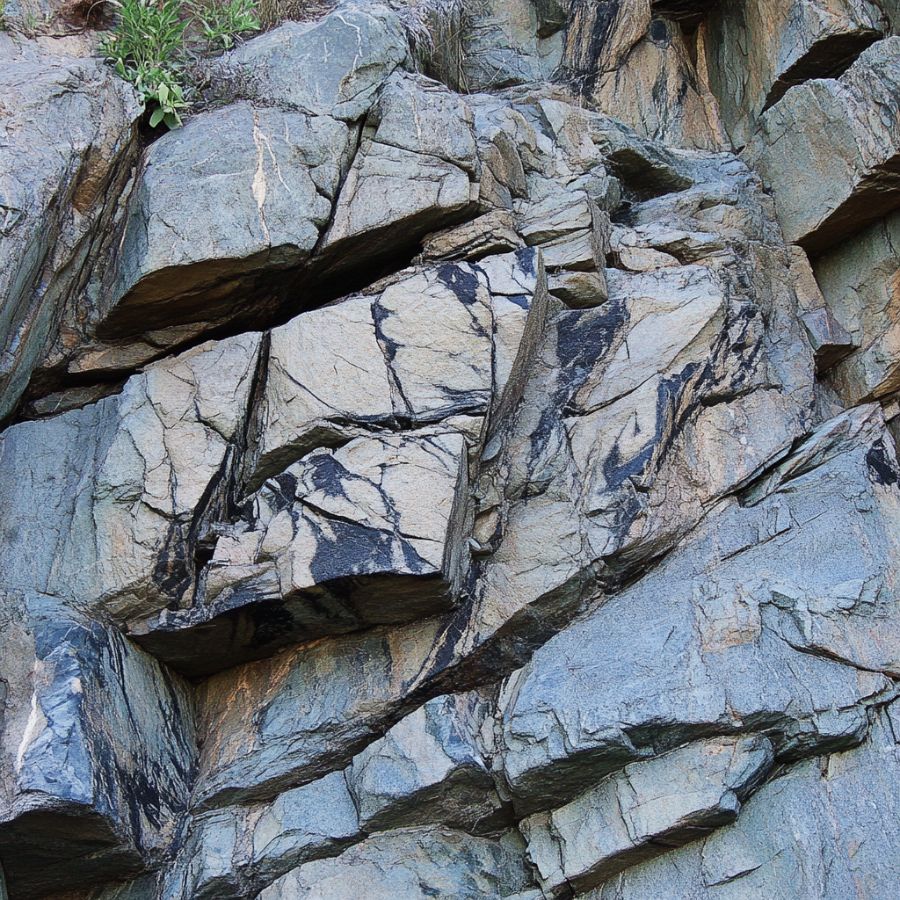
Look for dark-colored rock outcrops. Spot areas with lots of feldspar minerals. Check exposed cliff faces. Sometimes, when the sun hits just right, you might catch that signature blue flash from larger formations that’s a dead giveaway for labradorite presence.
Glacial Deposits
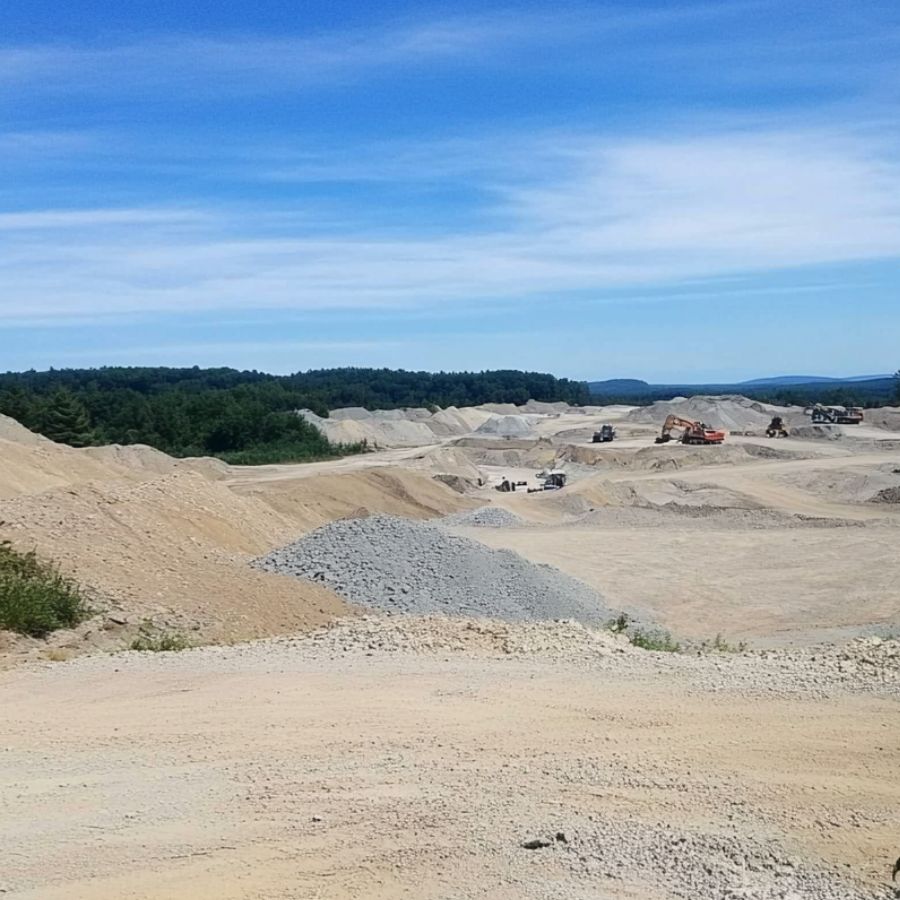
Search river beds after glacial deposits. Check gravel pits near old glacial paths. Look for smooth, dark gray stones mixed with other rocks. These deposits often contain chunks of labradorite that have broken off from larger formations and been carried downstream over thousands of years.
Mining Tailings
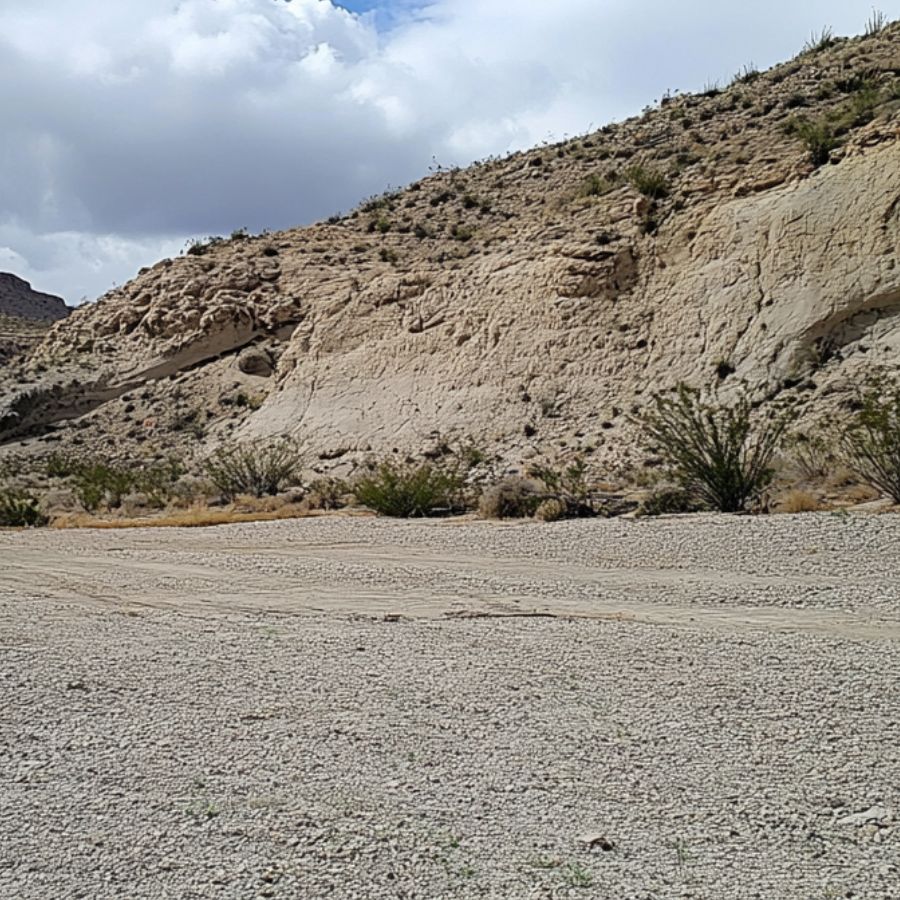
Visit abandoned feldspar mines. Check mine dump areas. Dig through tailings piles. Look for flat, shiny surfaces. The waste rock from old mining operations often contains overlooked pieces of labradorite that weren’t considered valuable during active mining periods but are perfect for collectors.
Stream Beds
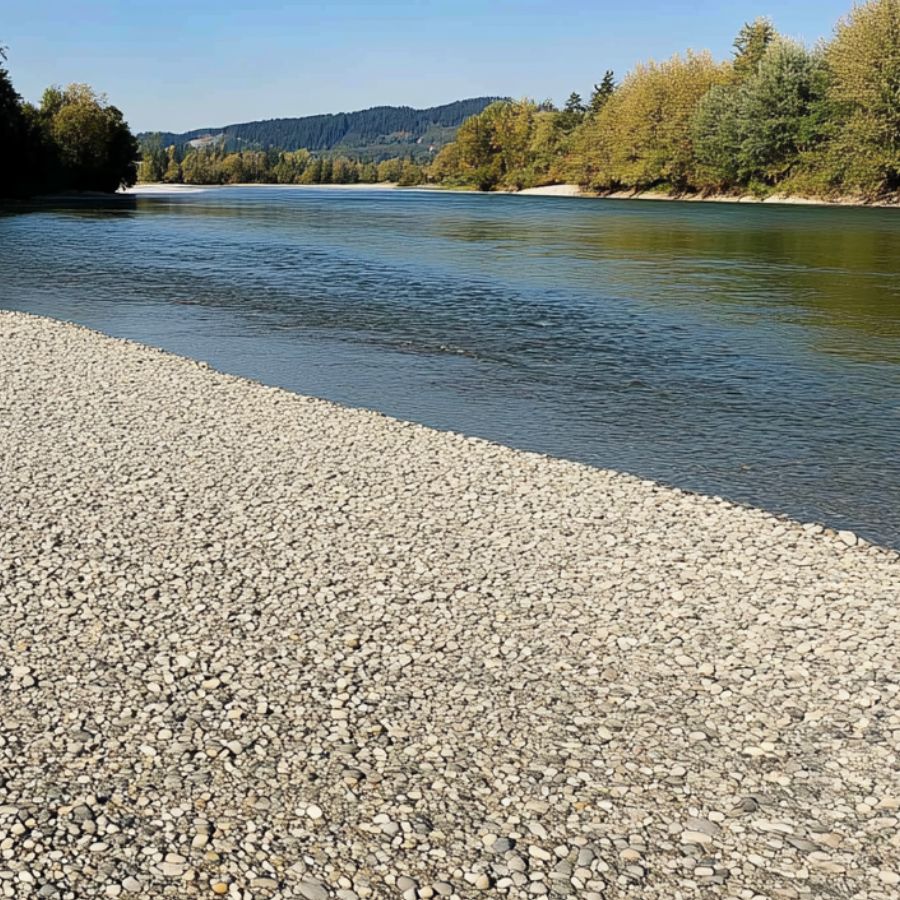
Search clear-water streams. Look under water-worn rocks. Check gravel bars after rain. Spot dark, plate-like stones. The constant water movement often exposes and polishes these stones, making them easier to identify when wet.
Some Great Places To Start
Here are some of the better places in the state to start looking for Labradorite:
Always Confirm Access and Collection Rules!
Before heading out to any of the locations on our list you need to confirm access requirements and collection rules for both public and private locations directly with the location. We haven’t personally verified every location and the access requirements and collection rules often change without notice.
Many of the locations we mention will not allow collecting but are still great places for those who love to find beautiful rocks and minerals in the wild without keeping them. We also can’t guarantee you will find anything in these locations since they are constantly changing.
Always get updated information directly from the source ahead of time to ensure responsible rockhounding. If you want even more current options it’s always a good idea to contact local rock and mineral clubs and groups
Big Lost River
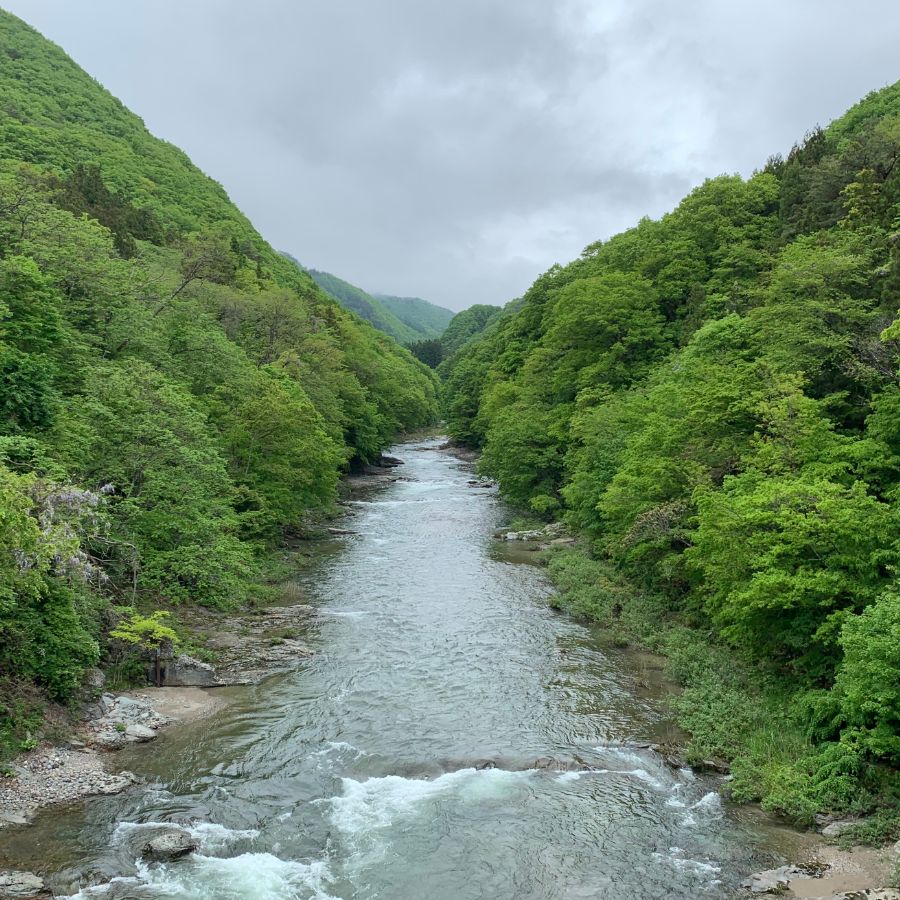
Big Lost River is a unique waterway in south-central Idaho that starts in the Pioneer Mountains and then disappears into the ground as it flows toward the Snake River Plain.
This river valley has many different types of rocks due to millions of years of earth movements, sediment buildup, and volcanic activity. The valley floor contains layers of loose materials like boulders, gravel, sand, and clay mixed with hardened lava flows.
Labradorite can be found in several areas along the Big Lost River. Near Darlington, look in the well-sorted sands and gravels where water has exposed mineral-rich layers.
Another good spot is around Moore Diversion, where river water meets groundwater and creates conditions for mineral deposits. The southern part of the valley near Arco is also promising because of how lava flows mix with sediments.
Cinder Butte
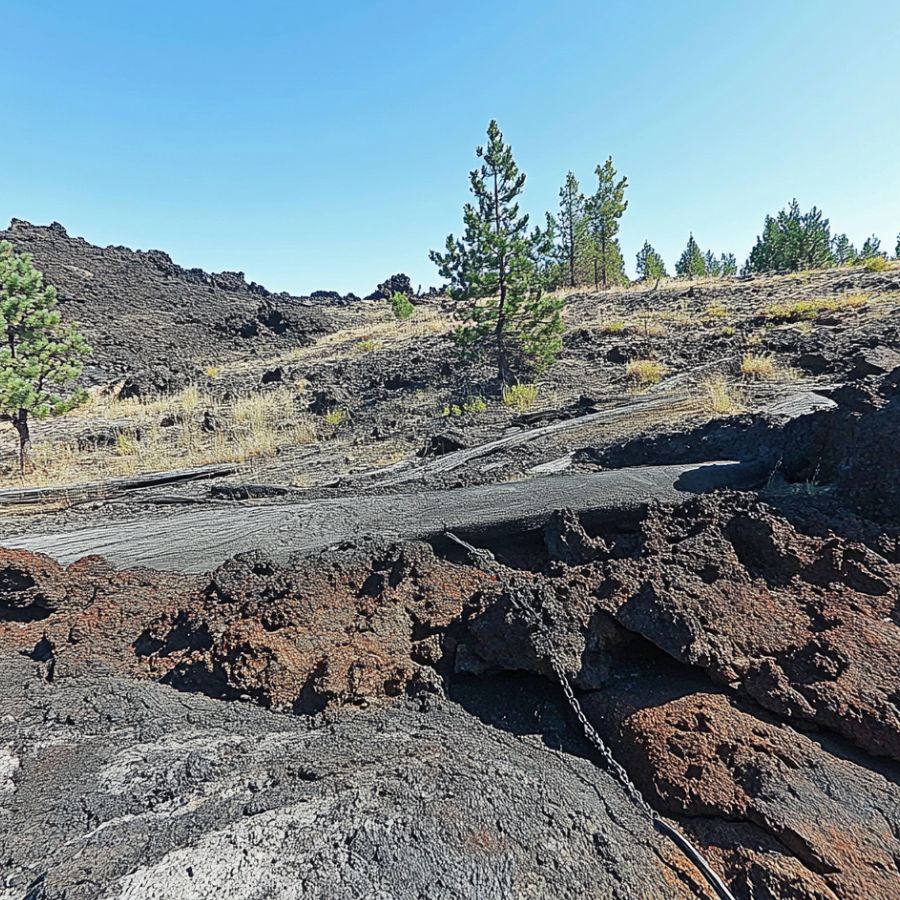
Cinder Butte is a volcanic cone near Spencer in Clark County. The butte formed when basaltic magma erupted through the Earth’s surface, creating a hill of volcanic debris. Today, it stands as a dark mound with rough, loose volcanic materials and little plant life covering its slopes.
Labradorite forms within cooling basalt, and this entire area is rich with basaltic material. The mineral appears as dark crystals embedded in the volcanic rock.
Your best chance of finding labradorite here is to examine the weathered slopes where erosion has broken down larger rocks. Focus on areas that show freshly exposed volcanic material.
Many collectors report success on the northern slopes where natural weathering processes have loosened mineral specimens from the surrounding rock. The relatively remote setting of Cinder Butte also means fewer visitors, increasing your chances of making a good find.
Fremont Area
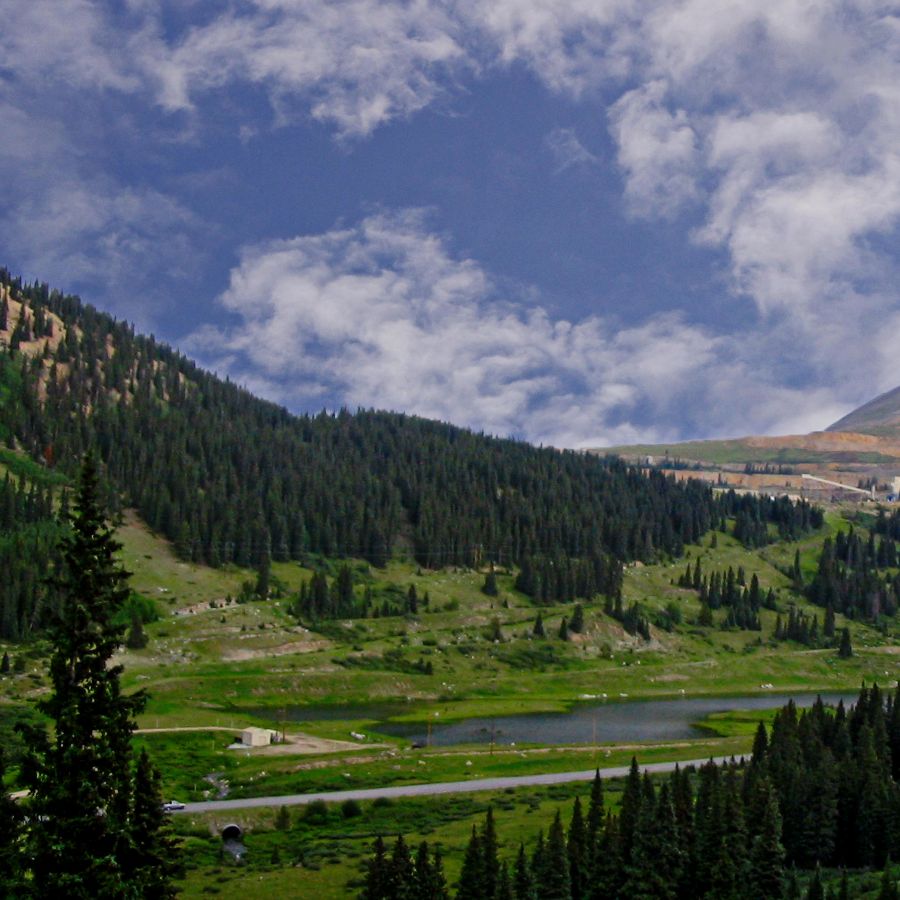
Fremont County takes up the northeastern corner of Idaho, where volcanic landscapes shape the terrain. The county includes parts of the Island Park Caldera and edges of the Yellowstone Plateau, giving it a special geology perfect for mineral formation.
Mac’s Butte is the most well-known spot in Fremont County for finding labradorite. This site contains deposits of the gemstone embedded in the volcanic rocks. The labradorite here formed when molten rock cooled slowly underground, allowing large crystals to develop before the rock was pushed to the surface.
Another place worth exploring is Crystal Butte, about 18 miles north of St. Anthony. While mainly known for clear feldspar crystals, rockhounds sometimes find labradorite here too. The best hunting spots are often along eroded hillsides where recent weather has exposed fresh material.
Spring is ideal for collecting after winter freezing and thawing has loosened new specimens from the bedrock.
Rexburg Area

Rexburg sits in Madison County, built on top of an ancient shield volcano. This city’s location gives rockhounds a special advantage when hunting for minerals. The nearby Menan Buttes, among the world’s largest volcanic tuff cones, formed about 10,000 years ago and hold geological treasures.
Finding labradorite in the Rexburg area means focusing on the Menan volcanic complex. This gemstone formed within cooling basalt flows that covered the region.
The North Menan Butte offers the best access through its trail system. Look for labradorite in areas where erosion has cut into the butte’s sides, exposing deeper rock layers.
Local rockhounds also search the smaller gullies around the base of the buttes where water has carried down mineral fragments. Beyond labradorite, this area yields gneiss, Teton jade, agate, and opal, making each trip potentially rewarding.
Dump Creek

Dump Creek runs through the Mackinaw Mining District in Lemhi County. At about 3,799 feet elevation, this creek has a rich history of mineral exploration dating back to the early 1900s. Miners once worked these hills searching for valuable metals, leaving behind areas where rockhounds now search for specimens.
Last Chance Prospect stands out as the best site for finding Labradorite in Dump Creek. This specific location has documented occurrences of high-quality specimens.
Most collectors focus on examining the creek bed after spring runoff, when water has washed away soil and exposed new material. The surrounding hillsides also yield specimens where mining activity disturbed the ground.
Dump Creek remains less visited than other rockhounding sites in Idaho, giving dedicated collectors better chances of finding good specimens of labradorite alongside other minerals like albite, biotite, and rutile.
Places Labradorite has been found by County
After discussing our top picks, we wanted to discuss the other places on our list. Below is a list of the additional locations along with a breakdown of each place by county.
| County | Location |
| Latah | Nirk Quarry |
| Latah | Hoodoo Mining District |
| Latah | Levi Anderson Mine |
| Latah | Muscovite Mine |
| Latah | Mica Mines near Avon |
| Boise | Shafer Creek |
| Owyhee | Long Gulch |
| Owyhee | Silver City Area |
| Owyhee | Florida Mountain |
| Owyhee | War Eagle Mountain |
| Owyhee | South Mountain Area |
| Valley | Yellow Pine Mining District |
| Valley | Paddy Flat Road Area |
| Valley | Green Mountain Area |
| Lemhi | Blackbird Mining District |
| Lemhi | Parker Mountain Mining District |
| Lemhi | Mackinaw Mining District |

